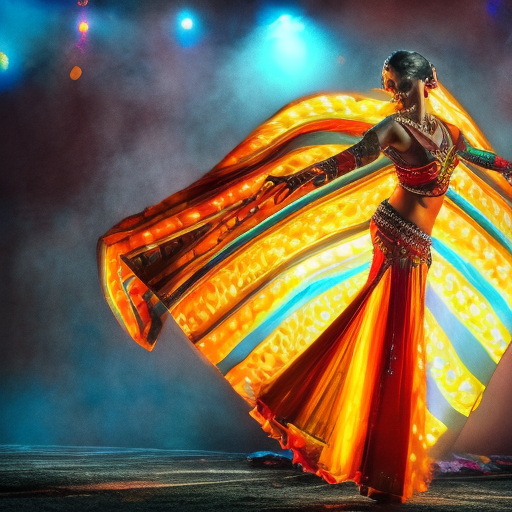Belly Dance: A Sensual and Expressive Art Form
Belly dance, also known as Oriental dance or Raqs Sharqi, is a captivating and expressive art form that originated in the Middle East. With its fluid movements, intricate hip isolations, and mesmerizing costumes, belly dance has gained popularity worldwide as a form of entertainment, exercise, and self-expression.
History and Origins
Belly dance has a rich history that dates back thousands of years. Its exact origins are debated among scholars, but it is believed to have originated in ancient Mesopotamia, present-day Iraq, and Egypt. Over time, belly dance evolved and incorporated influences from various cultures, including the Greeks, Romans, and Persians.
Technique and Movements
Belly dance is characterized by its emphasis on isolating different parts of the body, particularly the hips, abdomen, and chest. The movements are fluid and undulating, creating a mesmerizing visual effect. Common movements in belly dance include hip drops, shimmies, figure eights, and snake arms.
The technique of belly dance requires a strong core and control over individual muscle groups. Dancers often undergo rigorous training to develop the necessary strength and flexibility. Additionally, dancers learn to interpret the music and express emotions through their movements, adding a unique element of storytelling to the art form.
Costumes and Accessories
One of the most visually striking aspects of belly dance is the elaborate costumes and accessories. Traditional belly dance costumes typically include a bedlah, which consists of a fitted bra top and a matching skirt or harem pants. These costumes are often adorned with sequins, beads, and coins that create a dazzling effect when the dancer moves.
In addition to the costume, belly dancers often wear accessories such as hip scarves, finger cymbals (zills), and veils. These accessories enhance the visual and auditory experience of the performance, adding layers of texture and sound to the dance.
Regional Styles
Belly dance has evolved differently in various regions, resulting in distinct styles. Some of the most well-known regional styles include Egyptian, Turkish, and American Tribal Style (ATS).
Egyptian belly dance is characterized by its graceful and fluid movements, with an emphasis on precise hip isolations. Turkish belly dance, on the other hand, is known for its energetic and lively style, featuring fast spins and intricate footwork. American Tribal Style belly dance combines elements from various cultures, incorporating group improvisation and a strong sense of community.
Popularity and Cultural Significance
Belly dance has gained popularity worldwide, with enthusiasts and practitioners in every corner of the globe. It is often performed in cultural events, weddings, and restaurants, providing entertainment and a glimpse into Middle Eastern culture.
In addition to its entertainment value, belly dance holds cultural significance. It is seen as a celebration of femininity, body positivity, and self-expression. Many women find empowerment and confidence through belly dance, as it allows them to embrace their bodies and express themselves creatively.
Health Benefits
Beyond its cultural and artistic aspects, belly dance offers numerous health benefits. The movements engage the core muscles, promoting strength and stability. It also improves flexibility, coordination, and posture. Moreover, belly dance is a low-impact form of exercise that can be enjoyed by people of all ages and fitness levels.
In conclusion, belly dance is a captivating and expressive art form that has captivated audiences for centuries. With its fluid movements, intricate technique, and cultural significance, it continues to thrive as a form of entertainment, exercise, and self-expression. Whether performed on stage or in a casual setting, belly dance offers a unique and enchanting experience for both dancers and spectators alike.












